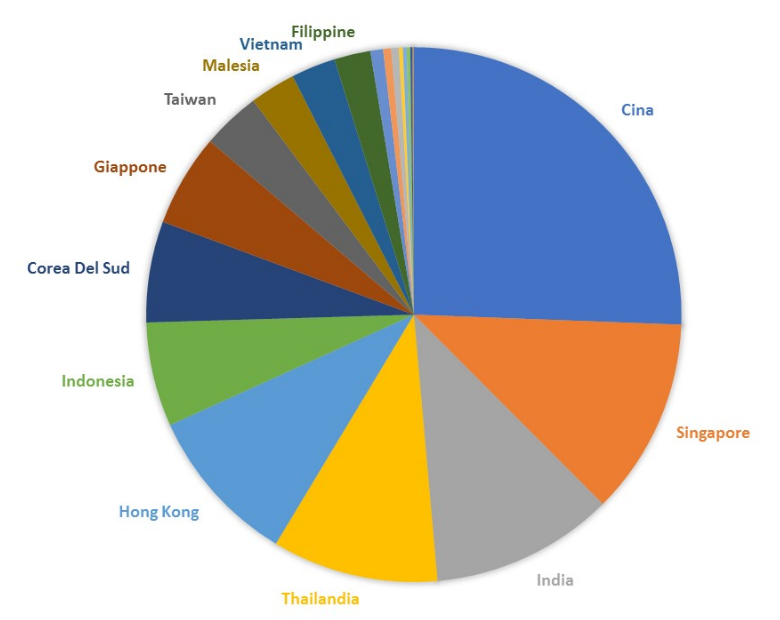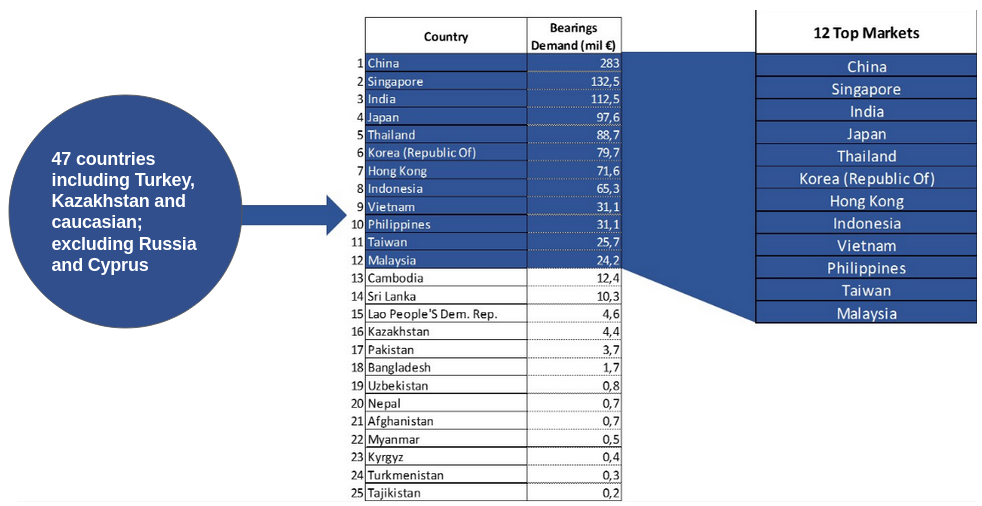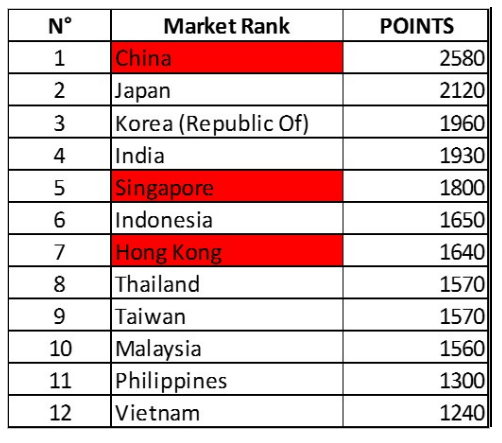How to Select a Target Market
Using ExportPlanning for the analysis and the choice of target markets in an internationalization strategy: a case study
Published by Pierantonio Gallu. .
Internationalisation Foreign markets Internationalisation tools
Log in to use the pretty print function and embed function.
Aren't you signed up yet?
signup!
The Business Case
An Italian manufacturer of industrial components has for years had its own production site in China, which was mainly intended for export and for the Chinese domestic market.
In concert with the Italian Headquarters, the strategy of the new General Manager of the Chinese subsidiary was to focus on systematic development of the company, making it independent in supplying not only the Chinese market but also other important Asian markets.
This objective required an initial phase of analysis of the Asian markets in order to identify priority markets in which to invest with a marketing and sales strategy.
We carried out the analysis using ExportPlanning, which allowed us to access all the necessary data using a single platform.
A first step of market analysis was made using customs data, based on the Combined Nomenclature code used for company's products.
This made it possible to estimate the market potential[1], which for Asia was $1.21 billion divided among the several countries as follows.
Asian market breakdown

The method
Starting from the 47 Asian countries analysed by ExportPlanning, in order to select the target countries for the company, the first 12 countries by market size were taken into consideration:
Top 12 Asian markets

For these 12 countries, data from about 20 indicators were analysed, all taken from ExportPlanning, and divided into 3 categories.
Macroeconomic Data
The following data were analysed for each country:
- Development factors: Doing Business Index;
- National accounts indicators: Total GDP in current prices, US$ billions;
- Demand characteristics: Female Population, total;
- Demand characteristics: Male Population, total;
- Forecast scenario: GDP forecast (International Monetary Fund);
- Country risk: Coface country risk assessment;
- Credit risk: SACE’s (Italian Export Credit Agency) corporate credit risk;
- Exchange rate risk: Exchange rate risk index;
Market data
The following data has been collected for each country according to the customs code of the product:
- Total import value in euro;
- Value of imports + estimate of domestic sales in euro;
- Incidence of high and medium high price bands;
- Import variation forecast in euro;
- Exports in values in euro (accessibility);
End user data
The 3 main segments of use of the company's products have been considered:
- Machines and equipment for the construction industry
- Engineering machines
- Lift and handling trucks
For each segment of use and for each country ExportPlanning has provided data for:
- Production value in euro;
Each indicator was then weighted by a factor that reflected its importance in determining the attractiveness of a market for the company.
Results
Assessing the data for all countries, the following ranking was obtained:
Market rank

China, for which there is a specific project, Singapore and Hong Kong, which are basically transit markets, were excluded from this list.
In order to arrive at the final choice of the 3-4 target markets, for the 9 remaining markets a further in-depth study was carried out, cross-referencing all the data provided by ExportPlanning with assessments referring to specific company conditions and its competitiveness on the several markets.
For this final examination it was necessary to collect some data directly on the markets and discuss with the company's staff involved in the development of the strategy.
[1] In ExportPlanning platform the closest measure to the market potential is given by the apparent demand, calculated as production+imports-exports.


